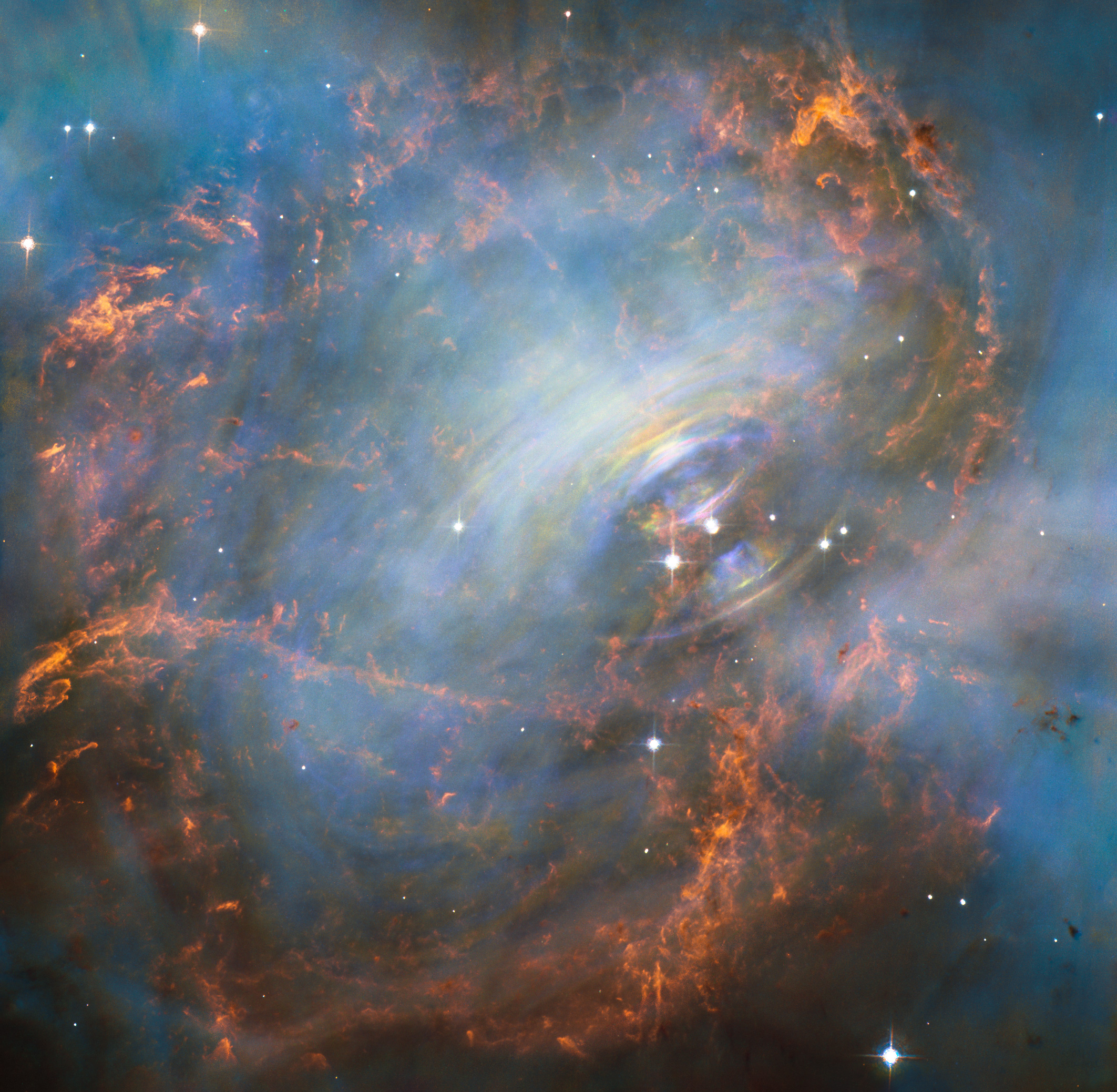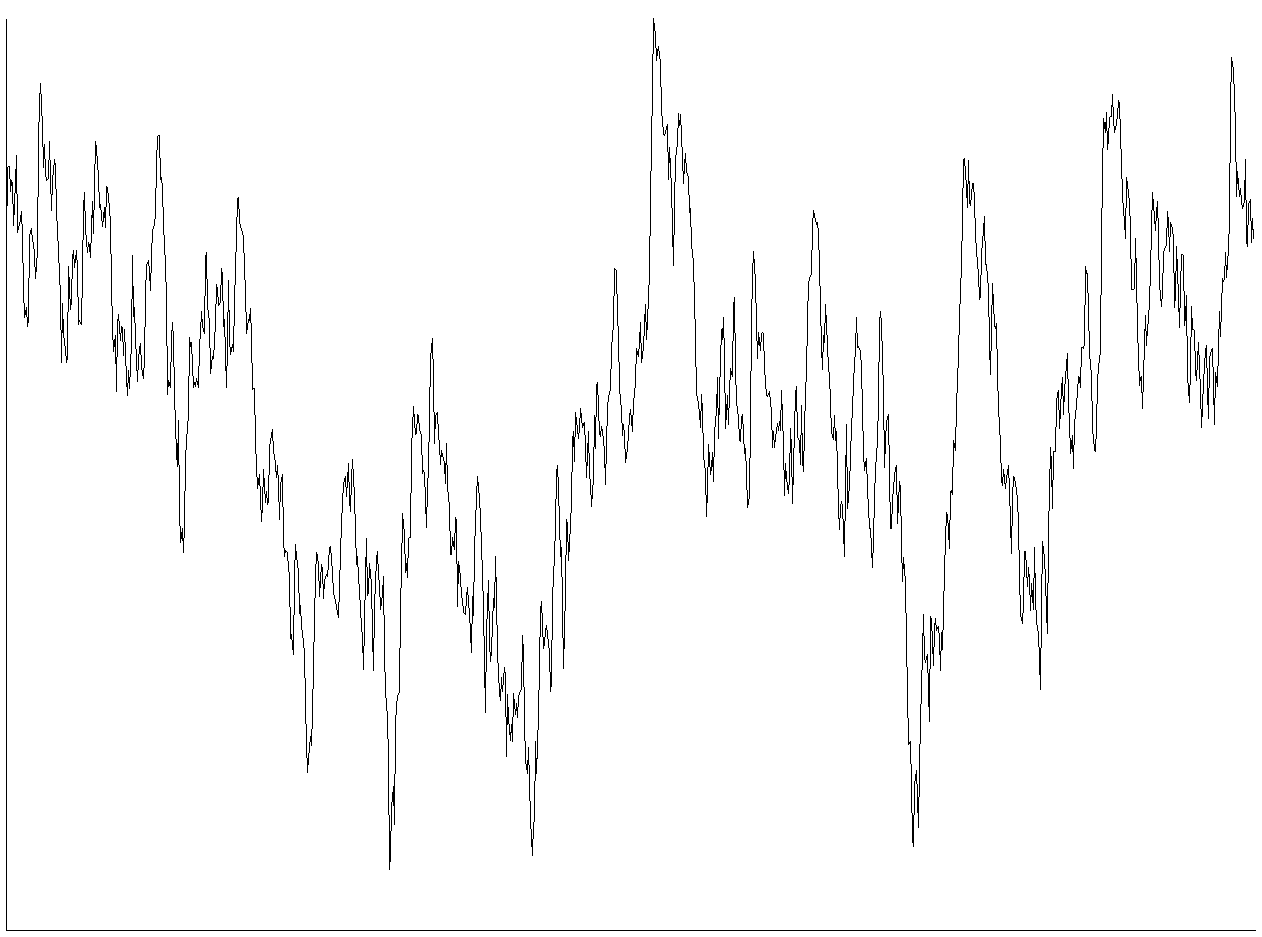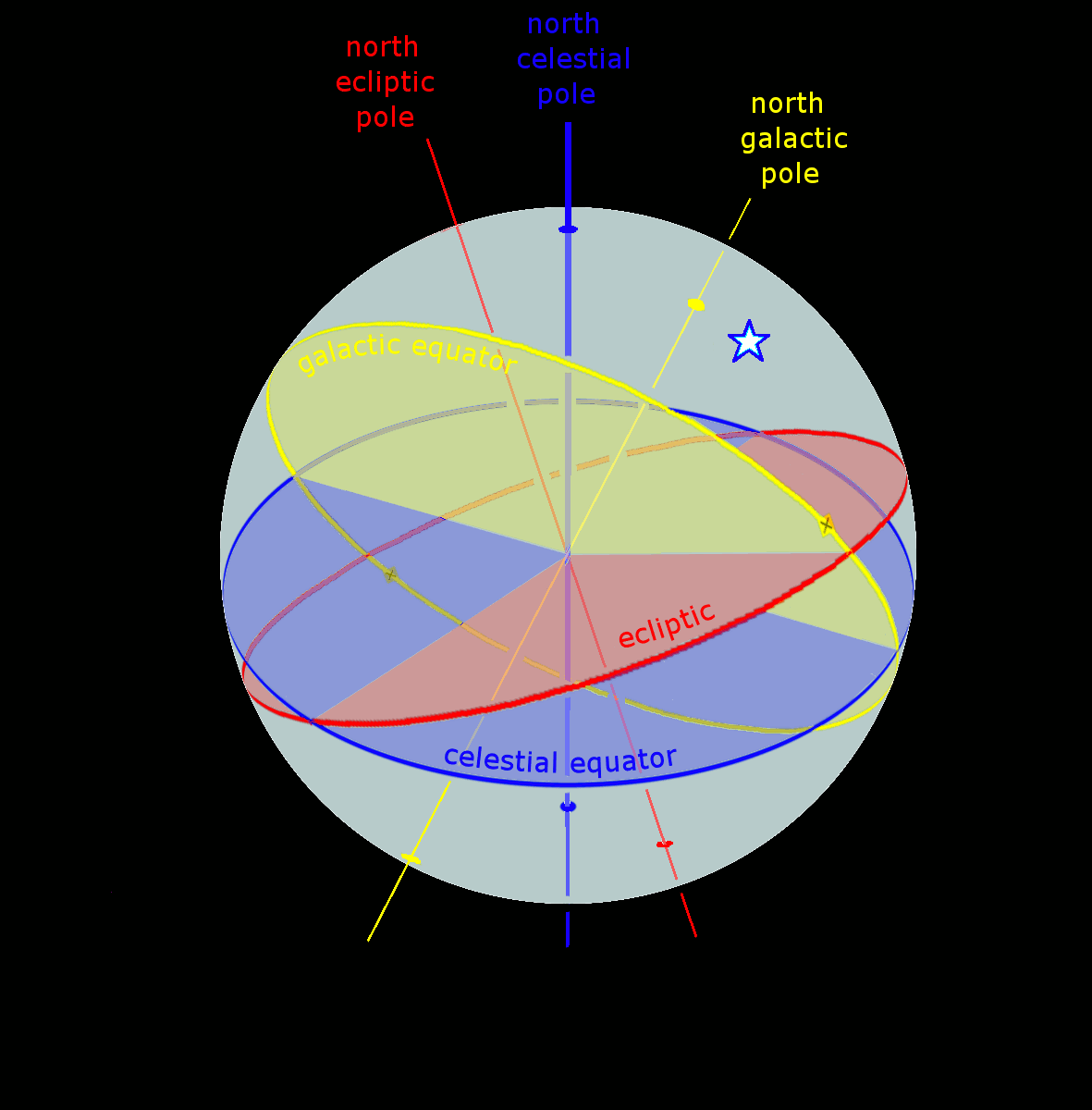|
CP 1919
PSR B1919+21 is a pulsar with a period of 1.3373 seconds and a pulse width of 0.04 seconds. Discovered by Jocelyn Bell Burnell on 28 November 1967, it is the first discovered radio pulsar. The power and regularity of the signals were briefly thought to resemble an extraterrestrial beacon, leading the source to be nicknamed LGM, later LGM-1 (for "little green men"). The original designation of this pulsar was CP 1919, which stands for Cambridge Pulsar at RA . It is also known as PSR J1921+2153 and is located in the constellation of Vulpecula. Discovery In 1967, a radio signal was detected using the Interplanetary Scintillation Array of the Mullard Radio Astronomy Observatory in Cambridge, UK, by Jocelyn Bell Burnell. The signal had a -second period (not in 1967, but in 1991) and 0.04-second pulsewidth. It originated at celestial coordinates right ascension, +21° declination. It was detected by individual observation of miles of graphical data traces. D ... [...More Info...] [...Related Items...] OR: [Wikipedia] [Google] [Baidu] |
Chart Showing Radio Signal Of First Identified Pulsar
A chart (sometimes known as a graph) is a graphical representation for data visualization, in which "the data is represented by symbols, such as bars in a bar chart, lines in a line chart, or slices in a pie chart". A chart can represent tabular numeric data, functions or some kinds of quality structure and provides different info. The term "chart" as a graphical representation of data has multiple meanings: * A data chart is a type of diagram or graph, that organizes and represents a set of numerical or qualitative data. * Maps that are adorned with extra information (map surround) for a specific purpose are often known as charts, such as a nautical chart or aeronautical chart, typically spread over several map sheets. * Other domain-specific constructs are sometimes called charts, such as the chord chart in music notation or a record chart for album popularity. Charts are often used to ease understanding of large quantities of data and the relationships between parts of th ... [...More Info...] [...Related Items...] OR: [Wikipedia] [Google] [Baidu] |
Interplanetary Scintillation Array
The Interplanetary Scintillation Array (also known as the IPS Array or Pulsar Array) is a radio telescope that was built in 1967 at the Mullard Radio Astronomy Observatory, in Cambridge, United Kingdom, and was operated by the Cavendish Astrophysics Group. The instrument originally covered 4 acres (16,000 m2). It was enlarged to 9 acres in 1978, and was refurbished in 1989. The array operates at a radio frequency of 81.5 MHz (3.7 m wavelength), and is made up of 4,096 dipole antennas in a phased array. Using 14 beams, it can map the northern sky in one day. The observatory's staff use sheep to keep grass away from the antennas because a lawn mower cannot fit in the spaces. Antony Hewish designed the IPS Array to measure the high-frequency fluctuations of radio sources, originally for monitoring interplanetary scintillation. Hewish received a Nobel Prize after the high time-resolution of the array allowed the detection of pulsars by Jocelyn Bell Dame Susan Jocelyn B ... [...More Info...] [...Related Items...] OR: [Wikipedia] [Google] [Baidu] |
Nobel Prize
The Nobel Prizes ( ; ; ) are awards administered by the Nobel Foundation and granted in accordance with the principle of "for the greatest benefit to humankind". The prizes were first awarded in 1901, marking the fifth anniversary of Alfred Nobel, Alfred Nobel's death. The original Nobel Prizes covered five fields: Nobel Prize in Physics, physics, Nobel Prize in Chemistry, chemistry, Nobel Prize in Physiology or Medicine, physiology or medicine, Nobel Prize in Literature, literature, and Nobel Peace Prize, peace, specified in Nobel's will. A sixth prize, the Nobel Memorial Prize in Economic Sciences, Prize in Economic Sciences, was established in 1968 by Sveriges Riksbank (Sweden's central bank) in memory of Alfred Nobel. The Nobel Prizes are widely regarded as the most prestigious awards available in their respective fields.Nobel Prize#Shalev69, Shalev, p. 8. Except in extraordinary circumstances, such as war, all six prizes are given annually. Each recipient, known as a laur ... [...More Info...] [...Related Items...] OR: [Wikipedia] [Google] [Baidu] |
Martin Ryle
Sir Martin Ryle (27 September 1918 – 14 October 1984) was an English radio astronomer who developed revolutionary radio telescope systems (see e.g. aperture synthesis) and used them for accurate location and imaging of weak radio sources. In 1946 Ryle and Derek Vonberg were the first people to publish interferometric astronomical measurements at radio wavelengths. With improved equipment, Ryle observed the most distant known galaxies in the universe at that time. He was the first Professor of Radio Astronomy in the University of Cambridge and founding director of the Mullard Radio Astronomy Observatory. He was the twelfth Astronomer Royal from 1972 to 1982. Ryle and Antony Hewish shared the Nobel Prize for Physics in 1974, the first Nobel prize awarded in recognition of astronomical research. In the 1970s, Ryle turned the greater part of his attention from astronomy to social and political issues which he considered to be more urgent. He was also an enthusiastic am ... [...More Info...] [...Related Items...] OR: [Wikipedia] [Google] [Baidu] |
Texas Symposium On Relativistic Astrophysics
Ivor Robinson (October 7, 1923 – May 27, 2016) was a British-American mathematical physicist, born and educated in England, noted for his important contributions to the theory of relativity. He was a principal organizer of the Texas Symposium on Relativistic Astrophysics. Biography Born in Liverpool, October 7, 1923, "into a comfortable Jewish middle-class family", Ivor Robinson read mathematics at Trinity College, Cambridge, as an undergraduate, where he was influenced by Abram Samoilovitch Besicovitch. He took his B.A. in Mathematics from the University of Cambridge in 1947. His first academic placements were at University College of Wales, King's College London, University of North Carolina, University of Hamburg, Syracuse University and Cornell University. Alfred Schild was developing a department strong in relativity at Austin, Texas, when a second Texas center for relativity research was proposed. Lloyd Berkner was directing the Southwest Center for Advanced Studies at ... [...More Info...] [...Related Items...] OR: [Wikipedia] [Google] [Baidu] |
Antony Hewish
Antony Hewish (11 May 1924 – 13 September 2021) was a British radio astronomer who won the Nobel Prize for Physics in 1974 (together with fellow radio-astronomer Martin Ryle) for his role in the discovery of pulsars. He was also awarded the Eddington Medal of the Royal Astronomical Society in 1969. Early life and education Hewish attended King's College, Taunton. His undergraduate degree, at Gonville and Caius College, Cambridge, was interrupted by the Second World War. He was assigned to war service at the Royal Aircraft Establishment, and at the Telecommunications Research Establishment where he worked with Martin Ryle. Returning to the University of Cambridge in 1946, Hewish completed his undergraduate degree and became a postgraduate student in Ryle's research team at the Cavendish Laboratory. For his PhD thesis, awarded in 1952, Hewish made practical and theoretical advances in the observation and exploitation of the scintillations of astronomical radio sources ... [...More Info...] [...Related Items...] OR: [Wikipedia] [Google] [Baidu] |
Neutron Star
A neutron star is the gravitationally collapsed Stellar core, core of a massive supergiant star. It results from the supernova explosion of a stellar evolution#Massive star, massive star—combined with gravitational collapse—that compresses the core past white dwarf star density to that of Atomic nucleus, atomic nuclei. Surpassed only by black holes, neutron stars are the second smallest and densest known class of stellar objects. Neutron stars have a radius on the order of and a mass of about . Stars that collapse into neutron stars have a total mass of between 10 and 25 solar masses (), or possibly more for those that are especially rich in Metallicity, elements heavier than hydrogen and helium. Once formed, neutron stars no longer actively generate heat and cool over time, but they may still evolve further through Stellar collision, collisions or Accretion (astrophysics), accretion. Most of the basic models for these objects imply that they are composed almost entirely o ... [...More Info...] [...Related Items...] OR: [Wikipedia] [Google] [Baidu] |
Fred Hoyle
Sir Fred Hoyle (24 June 1915 – 20 August 2001) was an English astronomer who formulated the theory of stellar nucleosynthesis and was one of the authors of the influential B2FH paper, B2FH paper. He also held controversial stances on other scientific matters—in particular his rejection of the "Big Bang" theory (a term coined by him on BBC Radio) in favor of the "steady-state model", and his promotion of panspermia as the origin of life on Earth. He spent most of his working life at St John's College, Cambridge and served as the founding director of the Institute of Astronomy, Cambridge, Institute of Theoretical Astronomy at Cambridge. Hoyle also wrote science fiction novels, short stories and radio plays, co-created television serials, and co-authored twelve books with his son, Geoffrey Hoyle. Biography Early life Hoyle was born near Bingley in Gilstead, West Riding of Yorkshire, England. His father Ben Hoyle was a violinist and worked in the wool trade in Bradford, an ... [...More Info...] [...Related Items...] OR: [Wikipedia] [Google] [Baidu] |
Thomas Gold
Thomas Gold (May 22, 1920 – June 22, 2004) was an Austrian-born astrophysicist, who also held British and American citizenship. He was a professor of astronomy at Cornell University, a member of the U.S. National Academy of Sciences, and a Fellow of the Royal Society (London). Gold was one of three young Cambridge scientists who in 1948 proposed the now mostly abandoned "steady state" hypothesis of the universe. Gold's work crossed boundaries of academic and scientific disciplines, into biophysics, astronomy, aerospace engineering, and geophysics. Early life Gold was born on May 22, 1920, in Vienna, Austria, to Max Gold, a wealthy Jewish industrialist (pre-war) who ran one of Austria's largest mining and metal fabrication companies, and German former actress Josefine Martin. Following the economic downfall of the European mining industry in the late 1920s, Max Gold moved his family to Berlin, where he had taken a job as director of a metal trading company.. Following the st ... [...More Info...] [...Related Items...] OR: [Wikipedia] [Google] [Baidu] |
Noise (physics)
In electronics, noise is an unwanted disturbance in an electrical signal. Noise generated by electronic devices varies greatly as it is produced by several different effects. In particular, noise is inherent in physics and central to thermodynamics. Any conductor with electrical resistance will generate thermal noise inherently. The final elimination of thermal noise in electronics can only be achieved cryogenically, and even then quantum noise would remain inherent. Electronic noise is a common component of noise in signal processing. In communication systems, noise is an error or undesired random disturbance of a useful information signal in a communication channel. The noise is a summation of unwanted or disturbing energy from natural and sometimes man-made sources. Noise is, however, typically distinguished from interference, for example in the signal-to-noise ratio (SNR), signal-to-interference ratio (SIR) and signal-to-noise plus interference ratio (SNIR) measures ... [...More Info...] [...Related Items...] OR: [Wikipedia] [Google] [Baidu] |
Celestial Coordinate
In astronomy, coordinate systems are used for specifying positions of celestial objects (satellites, planets, stars, galaxies, etc.) relative to a given reference frame, based on physical reference points available to a situated observer (e.g. the true horizon and north to an observer on Earth's surface). Coordinate systems in astronomy can specify an object's relative position in three-dimensional space or plot merely by its direction on a celestial sphere, if the object's distance is unknown or trivial. Spherical coordinates, projected on the celestial sphere, are analogous to the geographic coordinate system used on the surface of Earth. These differ in their choice of fundamental plane, which divides the celestial sphere into two equal hemispheres along a great circle. Rectangular coordinates, in appropriate units, have the same fundamental () plane and primary (-axis) direction, such as an axis of rotation. Each coordinate system is named after its choice of fundamental ... [...More Info...] [...Related Items...] OR: [Wikipedia] [Google] [Baidu] |
Pulse-width Modulation
Pulse-width modulation (PWM), also known as pulse-duration modulation (PDM) or pulse-length modulation (PLM), is any method of representing a signal as a rectangular wave with a varying duty cycle (and for some methods also a varying period). PWM is useful for controlling the average power or amplitude delivered by an electrical signal. The average value of voltage (and current) fed to the load is controlled by switching the supply between 0 and 100% at a rate faster than it takes the load to change significantly. The longer the switch is on, the higher the total power supplied to the load. Along with maximum power point tracking (MPPT), it is one of the primary methods of controlling the output of solar panels to that which can be utilized by a battery. PWM is particularly suited for running inertial loads such as motors, which are not as easily affected by this discrete switching. The goal of PWM is to control a load; however, the PWM switching frequency must be sele ... [...More Info...] [...Related Items...] OR: [Wikipedia] [Google] [Baidu] |








